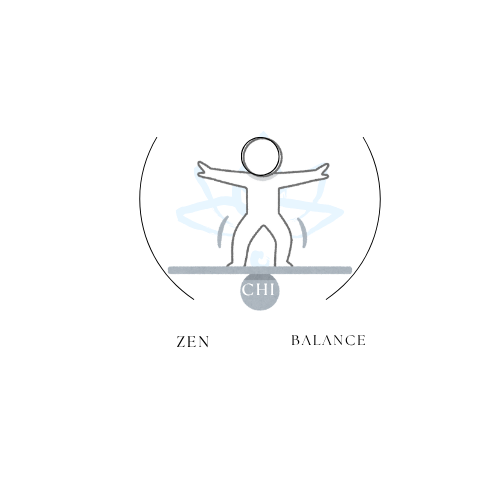
Holistic Health Compass for a Resilient Mind and Body
Share
Updated on: 2025-10-19
Table of contents
- Holistic health overview and benefits for everyday life
- Pros and cons of holistic health for whole-person health
- Step-by-step practical guide to holistic health at home
- Wrap-up: moving forward with holistic health
- Holistic health questions and answers
Holistic health overview and benefits for everyday life
Holistic health considers the whole person—mind, body, emotions, and environment—rather than focusing on one area alone. Many people value this perspective because it invites gentle awareness across daily routines, from movement and rest to nourishment and connection. Emphasizing holistic wellness can encourage small shifts that feel kind and realistic. When viewed through a whole-person health lens, progress is not defined by perfection, but by patient steps that support your unique needs, culture, and context.
In this guide, you will find practical ideas you can apply with ease. The suggestions are designed to be flexible, so they adapt to a range of lifestyles. You will also find clear definitions that demystify terms like mind-body wellness and integrative medicine, along with a beginner-friendly sequence you can personalize at home. If you appreciate steady, thoughtful progress, this approach may feel welcoming and sustainable.
Pros and cons of holistic health for whole-person health
- Pro: Flexible and personal. Holistic health respects individual preferences and cultural practices. You can choose options that feel supportive—whether that is a quiet breathing break or a short walk.
- Pro: Encourages gentle consistency. Many holistic wellness habits fit into small pockets of time. Even a few minutes can help you build a steady rhythm.
- Pro: Supports mind-body awareness. Approaches that include breath, movement, and reflection may nurture awareness across physical and emotional experiences in a respectful way.
- Pro: Can complement other approaches. Holistic perspectives can sit alongside integrative medicine, which brings together conventional care and selected complementary practices in an informed framework.
- Con: Can feel broad at first. The idea of “whole-person health” may seem wide. A simple starting plan can help reduce overwhelm.
- Con: Information varies in quality. Because the topic is broad, it may take time to find reliable, balanced resources that match your values.
- Con: Progress may be gradual. Gentle changes often build slowly. Patience helps you notice steady gains that might be easy to miss day to day.
While every path is personal, many readers appreciate holistic health because it gives permission to start small and stay kind to themselves. The key is choosing practices that respect your limits, your schedule, and your goals.
Step-by-step practical guide to holistic health at home
Set a gentle intention and take a baseline
Begin by choosing one kind intention for your well-being. You might say, “I would like to feel a little more grounded during my day,” or “I would like to protect a calm moment in the evening.” Keep language simple and compassionate.
Next, note a baseline. You could write down how you are sleeping, how your energy feels, and what tends to lift your mood. A few lines in a notebook are enough. This snapshot will help you notice subtle shifts as you explore holistic wellness at your own pace.
Design a simple holistic health plan for beginners at home
Create a short list of options you can rotate. This becomes your “holistic health plan for beginners at home.” Consider one practice from each area below so your plan feels balanced:
- Calm the mind: Quiet breathing, a gentle pause with your eyes closed, or three minutes of soothing music.
- Steady the body: Light stretching, a short walk, or mindful posture checks during the day.
- Support emotions: A few lines in a journal, gratitude notes, or a relaxing hobby.
- Environment and routine: Tidy a small surface, refill your water, or prepare a calm corner for rest.
Choose only two or three ideas to start. This keeps the plan friendly and realistic.
Create a mind-body wellness micro-routine
Mind-body wellness can feel approachable when it fits into short windows of time. A micro-routine might take five minutes in the morning or at midday. For example:
- One minute of easy breathing.
- Two minutes of gentle stretching while focusing on how your body feels.
- Two minutes to set a kind intention for the rest of your day.
These micro-moments may help you stay connected to your values and feel more present. If a day is busy, a micro-routine still gives you a small anchor to return to.
Support holistic wellness with environment and community
Holistic health also values the spaces and relationships around you. A tidy desk, a plant by a window, or soft lighting can create a sense of ease without extra effort. Community might look like a text to a friend, a shared walk, or a supportive group that aligns with your interests and identity.
If you wish to explore additional resources, you might like to visit the homepage of our community for thoughtful updates and insights: Home. You can also learn more about our background and approach here: About. For gentle articles and guides, you may enjoy browsing this section: Blog. To reach our team with a question or note, you can visit: Contact.
Track, reflect, and adjust with care
Every few days, reflect on what feels supportive. You can note what you tried, what felt kind to your schedule, and what you might adapt. If a practice feels heavy, it is okay to replace it with something lighter. Consistency builds when your plan feels friendly, not strict.
Some people like to place a small reminder near their workspace or on a phone background. Others prefer a short checklist. Choose the method that reduces effort for you.
Stay budget-friendly with flexible choices
If you are asking, “How can I start a holistic health routine on a budget?”, it may help to begin with options that cost little or nothing. A few ideas include:
- Use free timers or notes apps to support your micro-routine.
- Take short walks or try simple movement at home.
- Listen to calming sounds available at no cost.
- Repurpose items you already have for a calm corner, such as a cushion or blanket.
When you keep choices simple, the routine often becomes easier to sustain. If you decide to add tools later, you can do so gradually based on what you find most helpful.
Wrap-up: moving forward with holistic health
Holistic health invites a whole-person view of well-being that is thoughtful and kind. By starting with a gentle intention, choosing a few practices that fit your day, and checking in with yourself with patience, you can create a supportive rhythm that respects your needs. Whether you are exploring mind-body wellness on your own or alongside an integrative medicine perspective, a steady, compassionate approach often feels more sustainable than a strict plan. You are welcome to adapt these ideas so they reflect your values, your culture, and your priorities.
Holistic health questions and answers
What is holistic health and what does it include?
Holistic health is a whole-person health perspective that considers the connections between mind, body, emotions, environment, and daily routines. It often includes simple practices like calm breathing, gentle movement, supportive nutrition habits, rest, and mindful reflection. It may also consider surroundings, relationships, and purpose. The aim is balance and awareness rather than a single focus.
How can I start a holistic health routine on a budget?
Begin with low-cost or no-cost options and keep the plan very small. For example, choose a five-minute daily micro-routine, short walks, simple stretching, and a tidy space for quiet moments. Free digital tools—timers, notes, and calendars—can help you stay consistent. Over time, you can add items that align with your interests if you find them truly helpful.
How does holistic wellness relate to integrative medicine?
Holistic wellness and integrative medicine both value a broad view of well-being. Integrative medicine refers to combining conventional care with select complementary practices within an informed framework. Holistic wellness can be a personal lifestyle approach that focuses on daily routines and awareness. Some people find that a balanced lifestyle pairs well with professional guidance when appropriate.
What are gentle holistic health practices for stress and anxiety relief?
Many people find grounding in short, calming activities. Examples include quiet breathing, progressive muscle relaxation, slow stretches, and brief journaling. A simple routine—such as a short walk, soft music, or a few minutes outdoors—may help you feel more centered. It is often helpful to start small and choose practices that feel safe, kind, and manageable for you.

I'm a passionate curator at Zen Chi Balance, dedicated to spreading calm, harmony, and mindful living through faith-inspired lifestyle products. I help craft meaningful experiences for our global community of mindful shoppers.
The content provided is for informational and inspirational purposes only. It is intended to encourage personal growth, mindfulness, and balance in daily life. Zen Chi Balance does not provide medical, legal, or professional advice. For specific concerns or guidance, please consult a qualified professional. Visit us at www.zenchibalance.com for more inspiration and resources.
